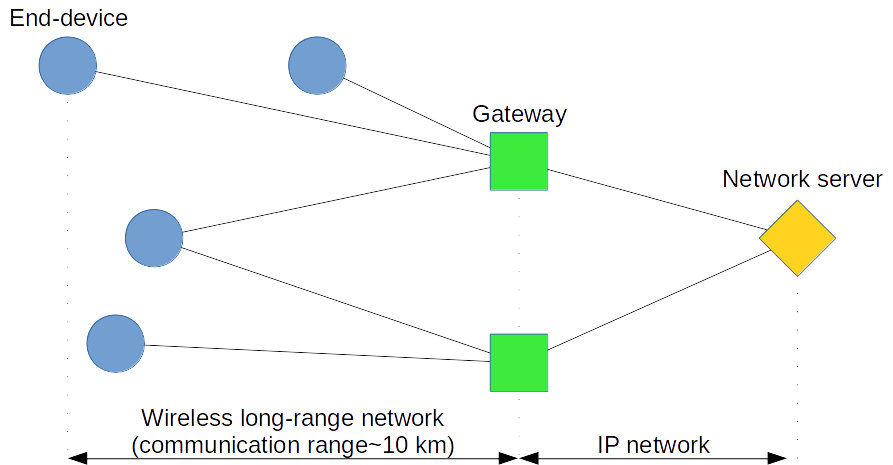LoRaWAN Project
Wireless sensor networks are widely used to monitor rural and urban environments. Indeed, wireless sensor networks have a strong potential due to their autonomy in energy. Wireless sensor networks have also found many applications with the Internet of Things paradigm, where the Internet us coupled with the physical world through sensors and actuators.
The main standard used for communications in wireless sensor networks is the IEEE 802.15.4 standard. IEEE 802.15.4 has only short-range capabilities. The communication range varies between tens of meters in indoor environment to up to one hundred meters in outdoor environment and favorable conditions, such as line of sight. To overcome this limitation, it is possible to deploy several nodes in order to achieve network connectivity. However, this comes at an extra cost, which might be prohibitive in large-scale applications such as volcano monitoring, forest monitoring, or large urban deployments.
Recently, long-range low-power wireless standards have emerged, such as Sigfox, Ingenu and LoRaWAN. These standards enable one-hop communications ranging from 2 kilometers in dense urban environments to 30 kilometers in rural environments. These standards bring high expectations, as they create new possibilities for low-power, large-scale monitoring applications.
LoRaWAN description
LoRaWAN is a low-power wide area network communication standard. It achieves long-range radio communications at small bit rates (from 0.3kbps to 50 kbps). Experimental results show transmission ranges of up to 1.3 km in an urban environment with a frame loss of 10% and of up to 21.6 km in line of sight conditions without loss.

LoRaWAN architecture is based on a star topology. End-devices communicate with gateways. Gateways relay the frames to the network server thanks to a classical internet infrastructure. Long-radio links are achieved with a proprietary modulation technique called LoraTM, developed by Semtech company and based on the Chirp Spread Spectrum technology. LoRa uses ISM bands and proposes also an adaptive data rate mechanism in order to adapt the transmission characteristics, such as data rate, spreading factor, and bandwidth, to the propagation conditions.
LoRaWAN defines three classes of end-devices: class A, class B, and class C. Class A is the default class, and is mandatory for all devices. Class B introduces beacons which allows end-devices to be synchronized and enable scheduled downlink communications. Class C removes the energy constraint by allowing nodes to continuously listen to the medium.
Objectives
The aim of LoRaWAN project is as follows:
- To analyze the performance of LoRaWAN standard which is open and freely available: to study the behaviour of the delay and the energy consumption by varying several parameters such as the data rate, the number of channels, etc.
- To propose new mechanisms improving the metric performance of LoRaWAN standard.